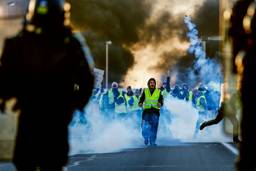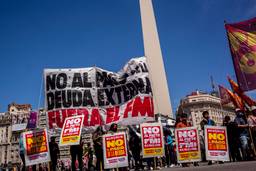Drone Free Zone
At the second annual Drone Summit, Code Pink and Cornel West argue that all lives are equal.
Cole Stangler

After nearly a decade of being shrouded in secrecy and failing to spark the interest of the political mainstream, the White House’s targeted killing program has been the subject of increased Congressional scrutiny in recent months. Much of the conversation has focused on the constitutionality of killing American citizens without trial, fueled in large part by Senator Rand Paul (R-Ky.)’s nearly 13-hour filibuster in March against the nomination of John Brennan — who, as Obama’s counterterrorism advisor, oversaw the administration’s expanded use of drone strikes overseas — to head the Central Intelligence Agency.
But while constitutionally inspired anxieties over due process and surveillance are on the upsurge, anti-war group Code Pink presented a deeper, more radical critique of drone warfare at the group’s second-ever Drone Summit, held at the Georgetown University Law Center in Washington, D.C., this weekend. It’s a critique that has roots in the peace movement and prides itself on not making a distinction between American and foreign lives. Of the 2,000−4,000 people killed in America’s covert drone wars in Pakistan, Yemen and Somalia, according to estimates from the London-based Bureau of Investigative Journalism, only five were U.S. citizens.
Philosopher Cornel West set the tone of the conference with his keynote address on Saturday morning. “The precious babies who are killed by U.S. drones in Pakistan, in Somalia, in Yemen have exactly the same value as those priceless white children who were killed in Newtown, Connecticut, as those black brothers and sisters on the South Side of Chicago, brown brothers and sisters in barrios, red brothers and sisters on reservations [and] yellow brothers and sisters,” he said.
There was a markedly international spirit to the affair, which featured speakers from countries targeted by strikes, such as Yemen and Pakistan. Also represented were the United Kingdom, which uses drones in Afghanistan, and Germany, where key U.S. military bases help carry out strikes in Somalia. In the main hall on Saturday, conference attendees were greeted by a collection of mock-graves bearing the names of victims. Also on exhibit was The U.S. Drones Quilt, a project overseen by the group Veterans for Peace, which devotes each of its individual panels to honoring civilian victims.
During one of the most moving panels, “View from Yemen,” the soft-spoken Faisal bin Ali Jaber, a Yemeni civil engineer who lost both his brother-in-law and a nephew in an American drone strike in August 2012, recounted his family’s story and called on the United States to halt the strikes altogether.
“They know the reality of this but they don’t have the audacity to apologize about what they’re causing,” Jaber said of the White House.
The group from Yemen was met with thundering applause and a standing ovation, with some in the crowd taking to the microphone to express a mix of solidarity and tearful apologies.
Bin Ali Jaber was joined on the panel by Entesar al Qadhi and Baraa Shiban, two youth representatives on Yemen’s National Dialogue Conference—which recently called for the country to outlaw drone strikes in its post-rebellion constitution. But much like the increasingly severe protestations from the Pakistani government, that ban can only carry so much weight — the United States has continued to carry out strikes in both nations. As Shiban pointed out, “the people with their hands on the trigger are here in America.”
So on the Monday after the conference, Code Pink and other summit attendees went to Capitol Hill to lobby the people with their hands on the trigger. Benjamin says they organized visits with 16 different Senate offices. Four peace activists were arrested at Charles Schumer (D-N.Y.)’s office after shouting out the names of drone strike victims and calling on Schumer to demand an end to the targeted killing program.
It’s difficult to discern the actual impact of this kind of street heat, at least when it comes to influencing policy in the United States. With the exception of one official Senate hearing on the constitutionality of the targeted killing program, a few other informal briefings held on Capitol Hill including the delegation from Yemen, and a handful of outspoken critics in Congress, the administration’s drone wars have received relatively little pushback from lawmakers.
So the summit participants focused on a very modest goal — urging legislators to pass a bill that would force the Obama administration to publicly release information on the number of drone strike casualties each year in an annual report. The measure already passed the Senate Intelligence Committee earlier this month by a 13-2 vote, a good sign that it stands a shot at passing the broader Senate. Organizers hope the measure can be attached as an amendment to the annual National Defense Authorization Act.
At a panel on Sunday called “Pressuring Governments for Change,” Robert Naiman, policy director at Just Foreign Policy, talked about why it’s important to get behind what may appear to some as an exceedingly weak demand. The public’s broad support for drone warfare, Naiman told the crowd, thrives on the administration’s ability to make two key claims: that the strikes are narrowly focused on high-level Al Qaeda figures and that civilian casualties are extremely rare.
“A key reason we need to force out more information from the administration is so they have to defend these two claims on the record, where they can be challenged,” Naiman said. “Critics say ‘X,’ anonymous administration officials say ‘No, that’s not true.’ And that’s the end of the story.”
Laying the groundwork for informed public debate is a long way from, say, repealing the Authorization for the Use of Military Force, which was passed in the aftermath of 9/11 and has since served as the basis for the United States’ covert military action overseas. But in a political climate in which the administration refuses to even release the legal memo justifying its targeted killing program, it’s easy to grasp the importance of these kinds of baby steps.
In spite of what might seem like slow-moving progress in the policy arena, Medea Benjamin is optimistic that the work of Code Pink and others “is having an impact.” She points out slowly shifting public opinion on drones—a poll in March showed that 65 percent of Americans supported strikes against “suspected terrorists,” as opposed to 83 percent in early 2012. Benjamin also sees the steep decline in the sheer number of strikes over the last couple of years and the growing opposition in the United Nations as signs that the administration is feeling the heat.
“If you look at the work many of us did around Iraq and Afghanistan for years and years, mobilizing huge protests and seeing nothing as a result of our work, year after year after year, this is pretty exciting,” Benjamin says. “Because we do see the change happening.”
Global pressure may be also playing a role. Last month, two different UN reports said that some American strikes had violated international law and called for increased transparency.
In addition to getting Congress to pass the bill putting drone casualties on the record, Benjamin thinks that enough public pressure could force the administration to release its memos justifying drone policy and get the CIA to fully relinquish its oversight of strikes in Pakistan to the Department of Defense, where they’d be subject to more transparency. She also thinks the administration may be on the verge of ending its practice of “signature strikes” — whereby drones target individuals whose activity fits the profile of terrorist suspects.
Joe Scarry of the No Drones Network sounds a more cautious note. Though he finds the slow swing in public opinion heartening, he points out that there’s not a unified front of public opposition to the technology’s most troubling applications. If Code Pink is most critical of how drones makes it easier to wage wars abroad, there’s a separate camp of civil libertarians who are more troubled by the privacy implications of UAV technology at home. “There is a wing of this movement that is concerned about surveillance; there is a wing of this movement that’s concerned about physical injury to people. If there is one area where there is not always full communication, coordination or agreement, that’s it,” says Scarry.
Without coalescence between these two camps of drone critics, Scarry isn’t so sure that the progress Benjamin hopes for is within reach.
But “if the people who feel most concerned about surveillance are actually successful at sitting together with the people concerned about physical injury,” he notes, “this is going to be an incredibly powerful movement.”

I hope you found this article important. Before you leave, I want to ask you to consider supporting our work with a donation. In These Times needs readers like you to help sustain our mission. We don’t depend on—or want—corporate advertising or deep-pocketed billionaires to fund our journalism. We’re supported by you, the reader, so we can focus on covering the issues that matter most to the progressive movement without fear or compromise.
Our work isn’t hidden behind a paywall because of people like you who support our journalism. We want to keep it that way. If you value the work we do and the movements we cover, please consider donating to In These Times.







